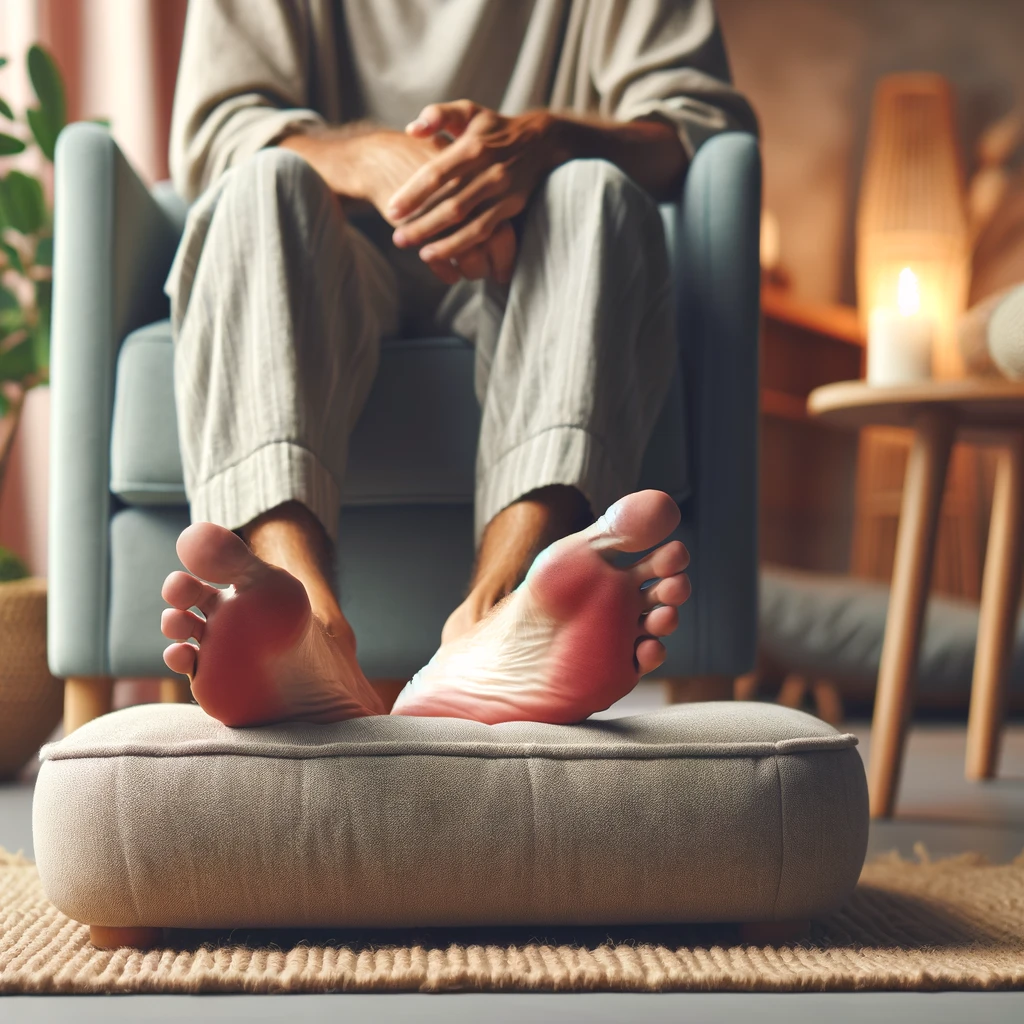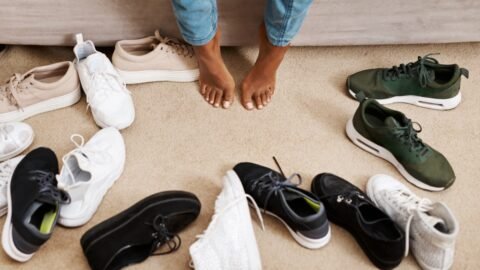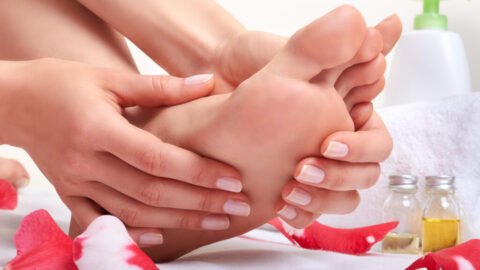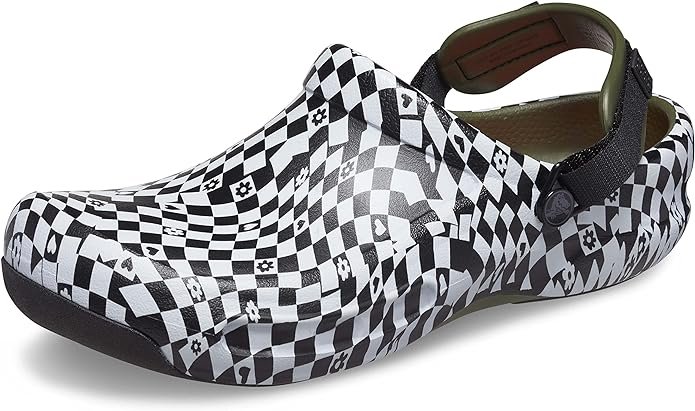Preventing and Treating Foot Fatigue: Essential Tips for Busy Nurses
Nurses tirelessly work long shifts, often spending hours on their feet with little or no time for breaks. This non-stop hustle can lead to foot fatigue, a common discomfort that impacts not just their physical health but also their ability to provide care effectively. It’s essential to address both the prevention and treatment of foot fatigue to ensure nurses can maintain their well-being and continue their vital role in patient care.
Understanding the causes of foot fatigue is the first step in combating it. Prolonged periods of standing and walking, combined with the pressure of body weight, can hinder proper blood circulation, leading to pain and swelling in the feet and legs. Nurses can reduce the risks of foot fatigue by wearing properly fitting footwear designed to offer support and comfort during extended periods of activity.
Beyond footwear, other strategies can also be beneficial in preventing and treating foot fatigue. Utilizing compression socks to improve blood flow and considering ergonomic interventions in the workplace are critical components. Additionally, incorporating regular breaks to sit, stretch, or elevate the feet can make a significant difference in mitigating the effects of a busy nurse’s schedule on their lower extremities.
Understanding Foot Fatigue

Foot fatigue is a common complaint among nurses, often resulting from prolonged periods of standing and walking during shifts. This section explores the origins and consequences of this condition in the nursing profession.
Causes of Foot Fatigue in Nursing
- Prolonged Standing: Nurses spend many hours on their feet, leading to muscle exhaustion and discomfort in the lower extremities.
- Inadequate Footwear: Shoes that lack proper support or cushioning can increase the risk of developing foot fatigue.
Wearing proper nursing shoes can significantly affect comfort and endurance on the job.
The Impact of Foot Fatigue on Health and Performance
- Physical Health: Persistent foot fatigue may lead to more serious conditions such as plantar fasciitis and joint pain.
The importance of preventing foot fatigue is underscored by its potential to compromise a nurse’s well-being and job performance. Addressing this issue is crucial for maintaining optimal health and patient care standards.
Footwear Selection
Selecting the right footwear is crucial for nurses, as it can significantly affect their comfort and long-term foot health. Proper footwear can help prevent foot fatigue and other related issues that arise from long hours of standing and walking.
Characteristics of Proper Footwear
Nurses should prioritize shoes with specific characteristics designed to support feet during long shifts. Here are essential features to look for:
- Arch Support: Adequate arch support helps distribute weight evenly.
- Material: Breathable materials, such as leather or mesh, keep feet dry.
- Fit: There should be enough room to wiggle toes, but the heel must be secure.
Shoes with laces often provide increased support, and ease of cleaning is crucial for maintaining hygiene in a hospital environment.
Evaluating Shoe Support and Comfort
Evaluating a shoe’s support and comfort involves a few key points:
- Insole: Check for a cushioned insole that provides shock absorption.
- Outsole: Look for a durable outsole with slip-resistant properties.
According to podiatrists, the best shoes for nurses are the ones that ensure comfort throughout the day without compromising on support. It is recommended to try shoes at the end of the day when feet are typically swollen to find the best fit for long shifts.
Workplace Ergonomics
Effective workplace ergonomics are crucial for nurses to maintain their health and efficiency. Tailoring the work environment to fit their needs helps in preventing and treating foot fatigue.
Flooring Solutions
The foundation of good ergonomics for busy nurses begins with the flooring. Floors in healthcare settings should provide adequate support and reduce the impact of prolonged standing. Options such as resilient vinyl or rubber flooring can aid in reducing foot fatigue and discomfort. Incorporating flooring solutions that are designed to reduce stress on the legs and back is an essential step for any medical facility.
Using Anti-Fatigue Matting
Anti-fatigue matting acts as a buffer between the nurse and hard flooring surfaces. These mats are designed to encourage subtle movements of leg and calf muscles, stimulating blood flow and reducing the strain. Nurses should look for matting that is easy to clean, slip-resistant, and durable enough to withstand the busy hospital environment. This simple addition to the workspace can significantly decrease the occurrence of foot and ankle disorders.
Effective Rest and Break Strategies

Nurses often face long shifts with considerable time on their feet, making effective rest and break strategies crucial to preventing foot fatigue and maintaining overall health.
Scheduled Breaks and Their Importance
Scheduled breaks are non-negotiable components of a nurse’s workday to combat fatigue. They should be planned and regular, providing nurses with designated times to rest and recuperate. Facilities that prioritize rest and sleep for nurses report improved job satisfaction and patient care. Understanding the importance of breaks is the first step towards implementing them effectively.
- Frequency: Nurses should have breaks spread evenly throughout their shift.
- Duration: Depending on the length of the shift, breaks should be long enough to offer meaningful rest—typically around 15-30 minutes.
- Activity: During breaks, nurses should sit down, elevate their feet, or engage in relaxing activities.
Resting Techniques During Shifts
Nurses can employ several resting techniques during shifts to alleviate foot fatigue. These strategies are essential for maintaining energy levels and ensuring that nurses can provide the best possible care to their patients.
Immediate Actions
- Quick stretches: Perform targeted foot and leg stretches to boost circulation.
- Changing stance: Shift weight from one foot to the other or walk in place briefly.
Proactive Measures
- Proper footwear: Wear shoes that provide strong arch support and cushioning.
- Use of compression socks: Consider compression socks to prevent stiff, sore legs and feet.
Implementing these strategies can profoundly affect nurses’ comfort and stamina throughout their demanding workdays.
Physical Exercises and Stretching
Incorporating specific exercises and stretches into one’s routine can significantly alleviate foot fatigue and prevent future discomfort for nurses who spend long hours on their feet.
Foot and Ankle Exercises
For the health of one’s feet, certain exercises can be advantageous. For instance, a toe splay involves spreading the toes apart as wide as possible, holding for a few seconds, then relaxing, aiming for 10 repetitions per foot. The Achilles stretch should be included as well, as maintaining flexibility in this tendon is essential for foot health. Nurses can gently stretch their Achilles tendon by leaning forward against a wall with one foot in front of the other, heel flat on the ground, and bending the front knee while keeping the back leg straight.
- Toe Splay
- Spread toes; hold, release
- 10 repetitions each foot
- Achilles Stretch
- Forward lean against wall
- Flat heel, bend knee, back leg straight
- Hold 20-30 seconds
For more information on various foot exercises, including stretches like the top-of-foot stretch, visit Harvard Health Publishing.
General Leg Strengthening
Strong leg muscles provide better support for one’s feet and can reduce foot fatigue. Exercises like squats and leg presses can strengthen the quadriceps, hamstrings, and calves. Nurses should strive for two to three sets of 10-15 repetitions, ensuring they have the proper form to avoid injury.
- Squats:
- Stand with feet hip-width apart
- Lower into a seated position, keeping knees over ankles
- 2-3 sets of 10-15 repetitions
- Leg Presses:
- Seated in a leg press machine
- Press against the resistance with the feet
- 2-3 sets of 10-15 repetitions
For additional exercises aimed at improving leg strength and flexibility, Healthline can be a valuable resource.
Nutrition and Hydration
Maintaining proper nutrition and hydration is crucial for nurses to manage the physical demands of their work and to prevent foot fatigue.
Dietary Considerations for Energy
A balanced diet that includes a variety of nutrients can help nurses sustain energy throughout their shifts. Nurses should focus on eating foods that are rich in complex carbohydrates for sustained energy, proteins for muscle repair, and a moderate amount of healthy fats. For instance, meal planning can be a valuable strategy for ensuring they have access to nutritious options during their busy schedules. According to 10 Quick Nutrition Tips for Busy Nurses – nursester.com, planning meals can help alleviate the stress of making food choices when time and energy are scarce.
Staying Hydrated on the Job
Proper hydration is essential to prevent dehydration, which can lead to symptoms that affect a nurse’s ability to perform effectively. Symptoms of dehydration include headaches, dizziness, and rapid heartbeat. Nurses can optimize their hydration by drinking water regularly throughout the day, rather than waiting until they feel thirsty. The importance of healthcare workers maintaining adequate hydration is discussed in an article by Abbott, emphasizing its role in preventing dehydration-related symptoms.
Professional Care and Advice

It is crucial for nurses to recognize when specialized care is necessary and how to use supportive devices properly to maintain foot health.
When to Consult a Podiatrist
Nurses should consider consulting a podiatrist if they experience persistent foot pain, changes in the appearance of their feet, or any signs of infections. A podiatrist can provide a focused lower extremity assessment and develop a patient-centered plan for foot care, which may include recommendations for therapeutic footwear or specific exercises.
Using Orthotics and Supports
Orthotics and supportive shoe inserts can be a key component for nurses to avoid or relieve foot pain. These devices are designed to provide additional support and correct foot alignment. Over-the-counter options are available, but for the best results, one should opt for custom-fitted orthotics that are tailored to the individual’s foot structure and specific needs.
Advocacy and Workplace Policies
Advocacy for nurses’ well-being and the implementation of supportive workplace policies are critical in combating foot fatigue. These initiatives are instrumental in promoting holistic care for caregivers who spend prolonged periods on their feet.
Promoting Healthier Work Environments
Healthier work environments are achieved through comprehensive programs addressing the physical demands of nursing. The development of work-life balance credos can foster a culture that prioritizes self-care, including adequate rest and supportive footwear. Workplaces that adhere to these principles create conditions that can significantly reduce the incidence of foot and ankle disorders.
Employee Wellness Programs
Employee wellness programs play a pivotal role in nurse resilience and well-being. These programs should include strategies for fatigue management, such as risk assessments and education on proper rest. Moreover, the inclusion of puncture resistant anti-fatigue insoles as part of the employee wellness benefits can provide not just comfort but also protection from workplace hazards.









[…] a higher risk for developing foot conditions like plantar fasciitis, a common ailment that causes heel pain due to inflammation of the plantar fascia. The right footwear can make a significant difference, offering relief and […]
[…] The ideal nursing shoes provide proper support, cushioning, and slip resistance to help maintain good posture and prevent injury while attending to […]
[…] nursing shoes for women is a decision that can dramatically impact comfort and health throughout long shifts on one’s feet. Nurses need shoes that provide relentless stability, optimal support, and necessary comfort to […]
[…] often spend long hours on their feet, which can lead to discomfort and back pain. Choosing the right shoes is crucial as it not only affects comfort during those long shifts but […]
[…] We consider durable and high-quality shoes that can withstand the rigors of long shifts without exacerbating foot pain. The goal is to find footwear that feels good hour after hour while providing the stability and […]
[…] footwear with adequate support and cushioning is crucial for nurses to minimize the risk and manage the symptoms of Achilles […]
[…] also presents various physical demands that can be challenging. The nature of the work often requires me to be on my […]